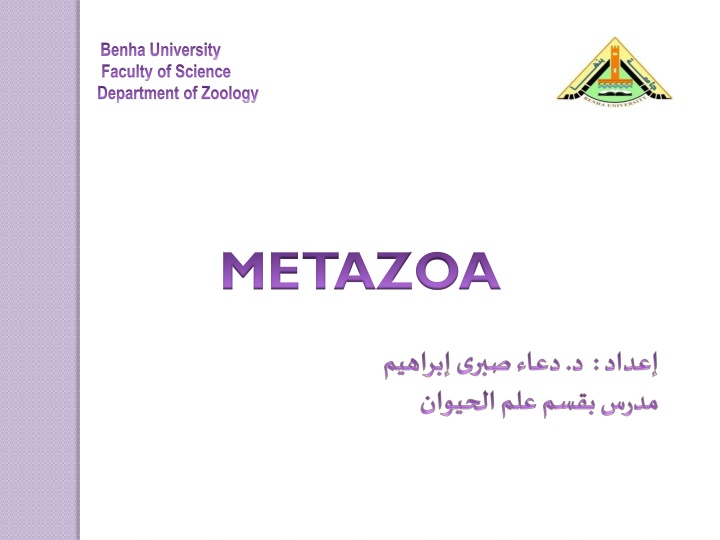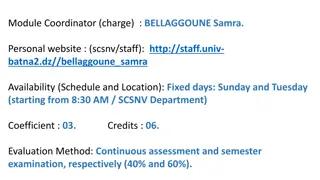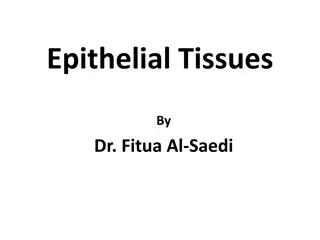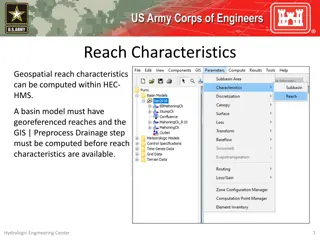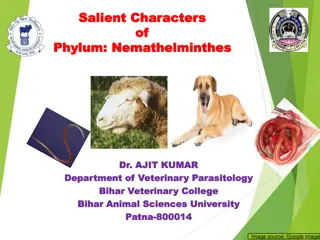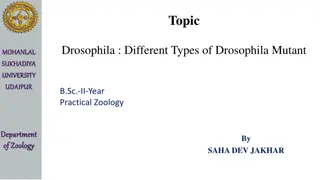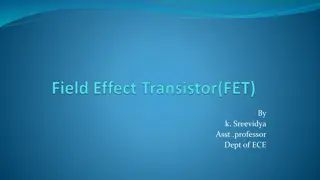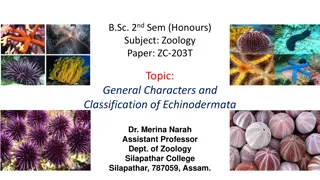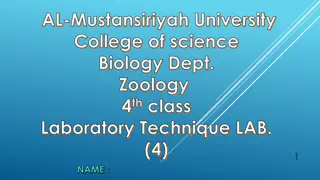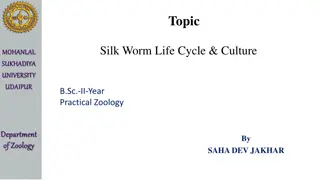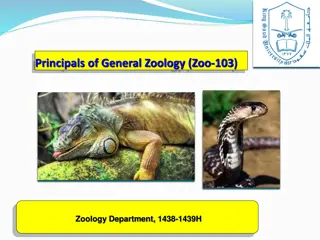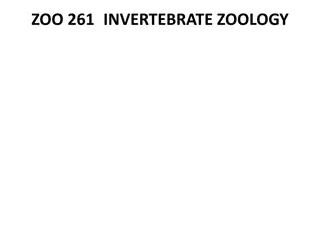General Characteristics of Coelenterata in Zoology Department at Benha University
Coelenterata is a subkingdom of Metazoa with aquatic, symmetrical body structures found in marine or freshwater environments. It exhibits alternation of generations between polyp and medusa forms. Tentacles aid in food capture and defense, while unique stinging cysts called nematocysts are present. The body wall is diploblastic, enclosing a gastrovascular cavity for digestion. Simple nervous system and sensory organs are also observed.
Download Presentation

Please find below an Image/Link to download the presentation.
The content on the website is provided AS IS for your information and personal use only. It may not be sold, licensed, or shared on other websites without obtaining consent from the author.If you encounter any issues during the download, it is possible that the publisher has removed the file from their server.
You are allowed to download the files provided on this website for personal or commercial use, subject to the condition that they are used lawfully. All files are the property of their respective owners.
The content on the website is provided AS IS for your information and personal use only. It may not be sold, licensed, or shared on other websites without obtaining consent from the author.
E N D
Presentation Transcript
Benha University Faculty of Science Department of Zoology METAZOA
Subkingdom: Metazoa Phylum: Coelenterata
General Characters of Coelenterata All are aquatic, mostly marine but a few freshwater including the well-known hydras. Individuals may be either solitary or colonial, and sedentary or free-swimming. Body is almost radically symmetrical.
Two types of body structures are characteristic, a sessile Hydra-like polyp or hydroid form and a free swimming jellyfish-like medusa or medusoid form . The Life-history commonly illustrates the phenomenon of alternation of generation, in which a sexual free swimming medusoid generation alternates with an asexual, sessile, usually colonial, polypoid generation. .
Short and slender, extensile projections, called tentacles, encircle the mouth and used for food capture, intake and defense.
They possess characteristic stinging cysts, known as the nematocysts or cindoblasts, which are not found in any other phylum.
The body wall is solid and diploblastic, that is composed of two definite cellular layers epidermis or ectoderm and gastrodermis or endoderm between these two layers is gelatinous non-cellular, intermediate supporting layer, the mesoglea.
The body wall encloses a single internal cavity called enteron or gastrovascular cavity. Digestion is partly extracellular occurring in the gastrovascular cavity, and partly intracellular taking place within food vacuoles inside the endodermal cells. Respiration and excretion take place by simple diffusion through the surface of the ectoderme and endoderm. Nervous system is primitive consisting of a diffuse network of unpolarized nerve cells in the body wall. Sensory organs may be simple or complicated, some with eyespots or statocysts.
Reproduction is both asexual by budding and regeneration, or sexual by ova and sperms. Some species may be hermaphroditic. But sexes are usually separate. The larva is ciliated and called planula. Coelenterata are classified into three classes: Hydrozoa, Scyphozoa and Actinozoa.
Class: Hydrozoa 1- Mostly marine and colonial. They have polyp and medusa stages in their life cycle, one of these stages may be absent. 2- The hydrozoan polyp is characterised by having an oral cone, solid tentacles and simple sac-like gastrovascular cavity not divided by internal partitions or mesenteries. 3- The mesoglea in the Hydrozoa is never cellular, and the gastrodermis lacks nematocytes.
Subkingdom: Metazoa Phylum: Coelenterata Class: Hydrozoa e.g.: Hydra
Types of nematocystes Penetrant Volvent Glutinant
Locomotion Gliding Walking Somersaulting Floating
Nutrition Extracellular digestion takes place, the gland cells secrete all enzymes that act on the proteins. The food is taken by the pseudopodia of the musculo-nutritive cells, where intracellular digestion begins in the food vacuoles of these cells and the digestion of proteins and fats is completed
Respiration and Excretion By simple diffusion
Asexual reproduction _ Budding _ Regeneration
